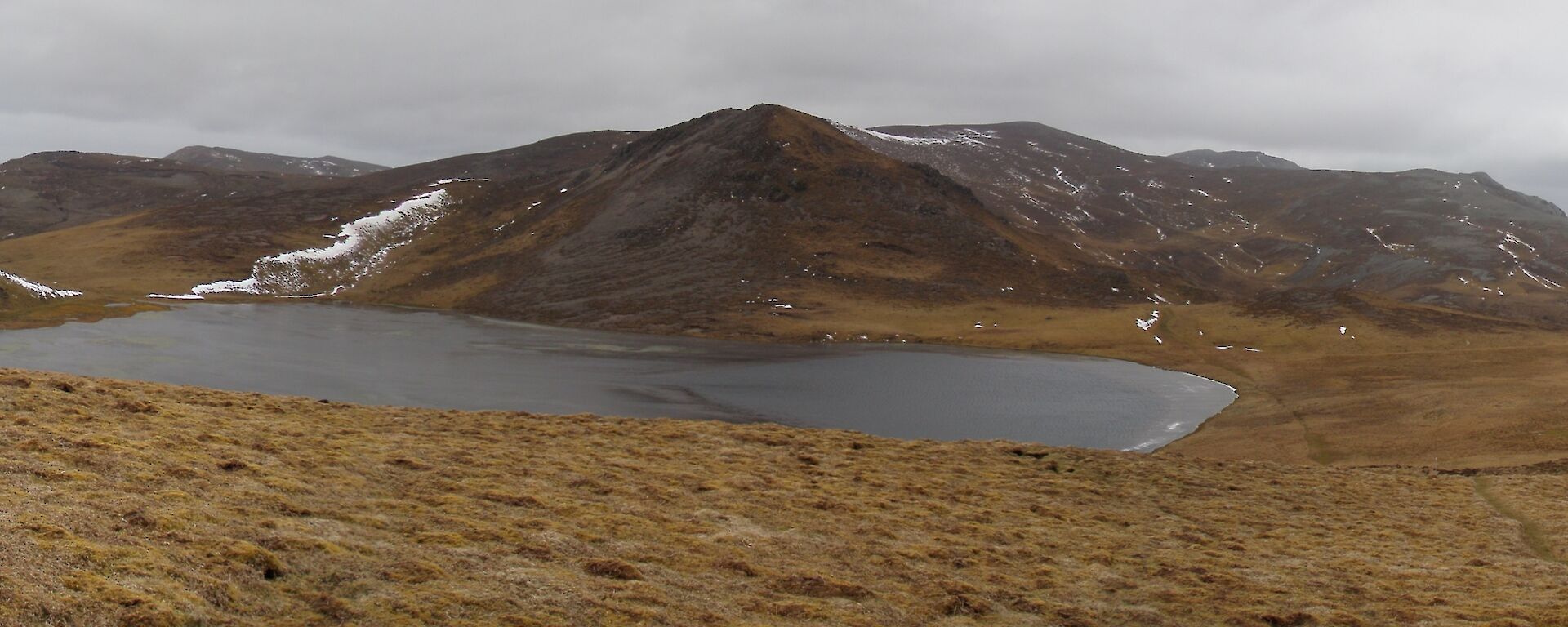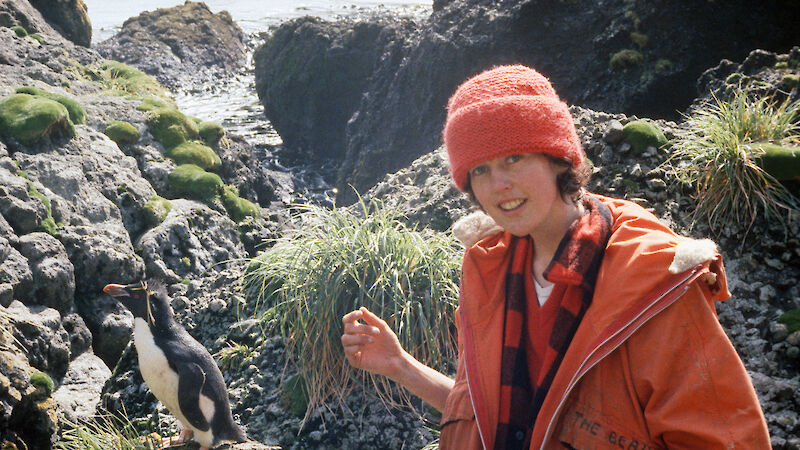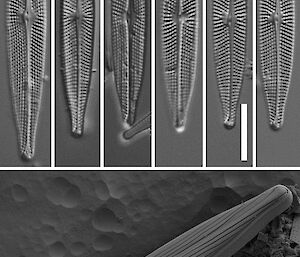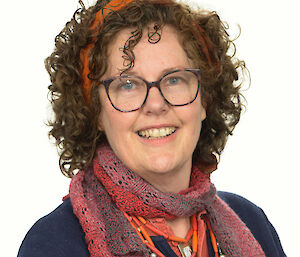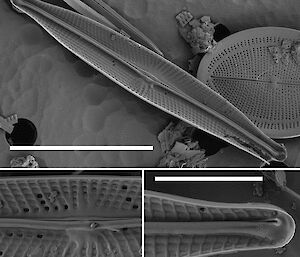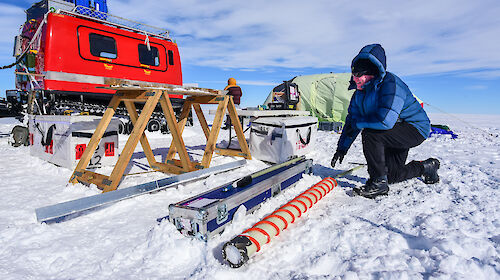A tiny freshwater plant with glass-like cell walls has been named after Australian Antarctic Division ecologist Dr Dana Bergstrom.
The single-celled diatom, called Navicula bergstromiana, is only 39–50 microns (0.039–0.05 millimetres) in size.
It was found in 2013 in a small lake on Macquarie Island, where Dr Bergstrom has spent a large part of her 36-year career.
Like all freshwater and marine diatom species, it has a tough silica-based cell wall, similar to glass, which remains in sediments long after the plant cell itself has died.
“I’m either as fragile as glass or I stay around forever,” Dr Bergstrom quipped, while also expressing how deeply honoured she is to be recognised for her work in protecting and conserving Antarctic and subantarctic ecosystems.
“Because diatoms basically last forever, they are useful indicator species of change,” she said.
“For example, you can reconstruct the climate of a region from hundreds to many thousands of years ago, based on what types of diatoms appear in different layers of sediment cores.”
Diatoms are responsible for almost half the primary production in the world’s oceans, contributing significantly to the oxygenation of the atmosphere and the removal of carbon dioxide. They are also a key food source for krill, fish and whales.
Large deposits of fossilised diatoms (diatomaceous earth) are used in a range of abrasive and absorbent products (such as toothpaste and kitty litter), in water filtration, and as a stabilising component of dynamite.
Dr Bergstrom’s canoe-shaped diatom is present in low numbers in many of the lakes on Macquarie Island. Coincidently, Dr Bergstrom said her Scandinavian surname means ‘cold stream’.
The diatom was identified by Dr Bart Van de Vijver (Botanic Garden Meise, Belgium), Dr Koen Sabbe (Ghent University, Belgium), and a small international team, in a paper in Plant Ecology and Evolution.
“We named N. bergstromiana in honour of Dr Bergstrom for her outstanding work on the botany and ecology of Antarctic and subantarctic ecosystems, and more specifically for her work in identifying and managing the impacts of humans and invasive species on Macquarie island,” the team said in their paper.
“She has also played a leading role in initiating and coordinating several international Scientific Committee on Antarctic Research science programs.”

